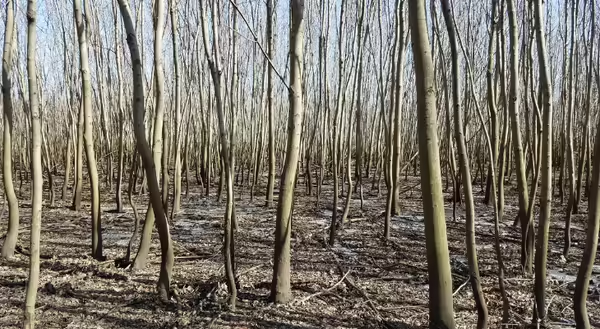
Plant competition is an instrumental part of natural ecosystems, with winners and losers in all cases. Still, it is really fascinating to consider why and how certain plants come out on top. In some examples, you can look at climate or other geographic constraints to understand why a particular plant thrives in a particular setting, but many times, it is often far more complex.
We often see one plant outcompeting another and simply attribute this win to the plant's growth rate. Such as a tulip poplar (Liriodendron tulipifera) outcompeting a white oak (Quercus alba) in the forest. Tulip Poplar is known to grow fast; that is simply part of its growth strategy. It relies on less root development and more shoot development to compete in nature.
However, if you place a tulip poplar on a rocky and dry, south-facing hilltop, the white oak is certainly going to win. White oaks focus more growth on root development at the expense of less shoot development. They spend more energy building an extensive root system and are adapted to drier, poorer soils.
Tulip poplar thrives on north or east-facing slopes, which typically have more fertile, moist, and deeper soils than other aspects. If you take tulip poplar out of that setting, it may or may not be able to compete, even though it usually has a faster growth rate than other species. In nutrient-poor, more dry soils, tulip poplar suffers since its root system may be restricted by poor soil conditions. A tulip poplar cannot afford to lose much of its already (relatively) small root system.
Environmental Factors Shaping Plant Success
Recently, a reader asked me a great question about non-native bush honeysuckle (Lonicera spp.) that relates to plant competition and site conditions. He was curious as to why honeysuckle is so prevalent across central IL but is not found along streams and rivers.
The answer lies in the extent to which floodwaters extend because honeysuckle cannot tolerate flooding. Since its root system is simply not adapted to low-oxygen conditions in the soil, such as flood-inundated soil, non-native honeysuckle cannot compete in the floodplain of most streams.
In central Illinois, our flooded areas are honeysuckle-free, but there are native plants that thrive in this environment. Silver maple (Acer saccharinum) absolutely flourishes where floodwaters extend. And, in many cases, it is so competitive that it forms dense stands which block out all other species. In natural areas, especially restorations, it can be a problem by heavily outcompeting other trees, becoming the only species on the site.
Silver maple is able to thrive in the floodplain because its root system is adapted to low oxygen. Its roots can support more anaerobic root respiration than honeysuckle, white oak, or other less adapted species. Therefore, it's able to outcompete most other plants in areas that flood extensively, often with inundation for weeks each year.
Site conditions and other physical aspects can tell us a lot about plant competition and are fairly easy to interpret in natural areas with limited human disturbance. However, the built landscape presents a whole new challenge. It often takes much finer observation, down to the “micro-climate” level in nature, to understand how plants lose or win in this highly variable setting. Oftentimes, soil conditions or other physical aspects of the site can vary widely across very short distances.
Applying Nature's Lessons to Urban Landscaping
In the landscape, adaptation to low soil oxygen serves silver maple well. Compacted soils, which are very common in urban areas, also present low-oxygen conditions. In this case, compacted soils have less oxygen since pore space is constricted from the act of compaction. Whereas flooded soils have low oxygen since pore space is filled with water.
Trees and shrubs adapted to flooding and low soil oxygen often do really well in landscape settings, even in the presence of compacted soils. Silver maple is prolific in cities and comprises a large proportion of many urban forests. However, its major downfall lies in its low resistance to rot and decay, which creates structural instability in the canopy, leading to frequent branch failure.
While there are many lessons gardeners can learn from plant competition in nature, one thing that fascinates me with gardening and landscaping is the complexity and the challenge of trying to apply these principles in a smaller, more controlled setting than a restoration. Even though a plant may grow well, gardeners must still consider other aspects, such as a tree’s structural integrity, before finding the perfect plant. That’s one of the many challenges that keeps things exciting!
Photo Caption: Nearly every stem in this picture is a silver maple, which can often dominate flooded sites like this young forest along the Sangamon River. Photo by Ryan Pankau, Illinois Extension.